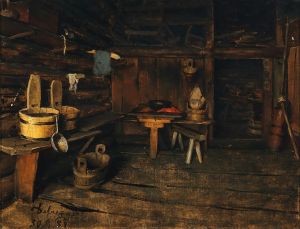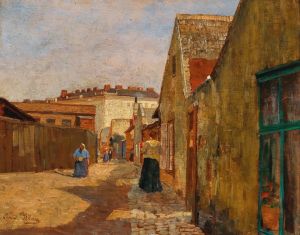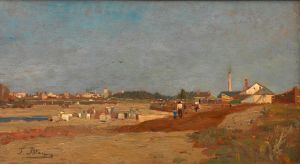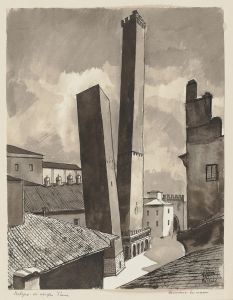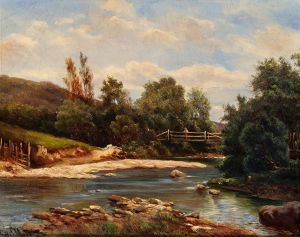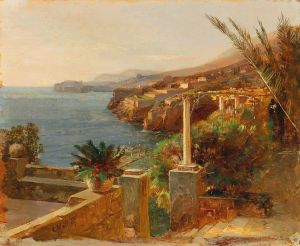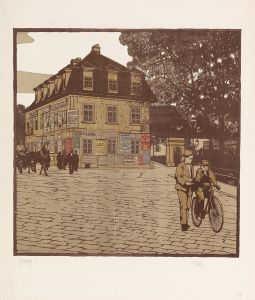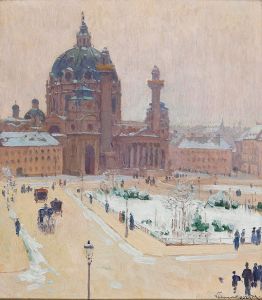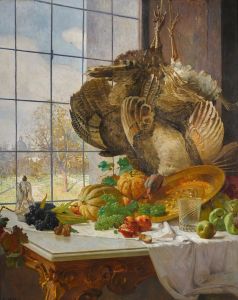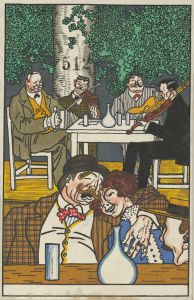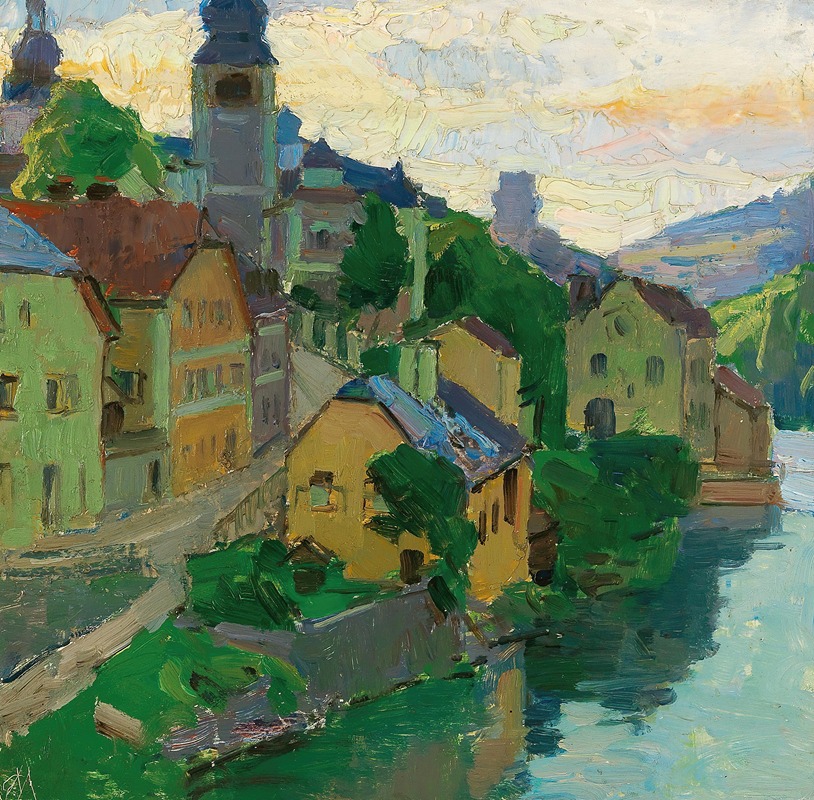
Waidhofen an der Ybbs
A hand-painted replica of Carl Moll’s masterpiece Waidhofen an der Ybbs, meticulously crafted by professional artists to capture the true essence of the original. Each piece is created with museum-quality canvas and rare mineral pigments, carefully painted by experienced artists with delicate brushstrokes and rich, layered colors to perfectly recreate the texture of the original artwork. Unlike machine-printed reproductions, this hand-painted version brings the painting to life, infused with the artist’s emotions and skill in every stroke. Whether for personal collection or home decoration, it instantly elevates the artistic atmosphere of any space.
Carl Moll (1861–1945) was an Austrian painter associated with the Vienna Secession, an art movement that sought to break away from traditional academic art and embrace modernist ideas. One of his notable works, Waidhofen an der Ybbs, depicts the picturesque town of Waidhofen an der Ybbs, located in Lower Austria. This town is known for its scenic landscapes, historic architecture, and its location along the Ybbs River.
Moll's painting reflects his characteristic style, which often combined elements of realism with a focus on light, atmosphere, and mood. He was particularly skilled at capturing the interplay between natural and architectural elements, and this is evident in Waidhofen an der Ybbs. The painting showcases the town's charm, with its historic buildings and the surrounding natural beauty, likely emphasizing the tranquil and idyllic qualities of the region.
As a founding member of the Vienna Secession, Moll was deeply influenced by the movement's principles, which included a rejection of traditional academic art and an embrace of modern techniques and aesthetics. His works often exhibit a harmonious balance between detail and abstraction, and his use of color and composition demonstrates a keen sensitivity to the environment he depicted.
While specific details about the creation date or the current location of Waidhofen an der Ybbs are not readily available, the painting is representative of Moll's broader body of work, which frequently explored Austrian landscapes and urban scenes. His art provides a window into the cultural and natural heritage of Austria during the late 19th and early 20th centuries.
Carl Moll's legacy as an artist is closely tied to his role in promoting modern art in Austria. Alongside other prominent artists of the Vienna Secession, such as Gustav Klimt, Moll contributed to a significant period of artistic innovation and cultural transformation. His works remain appreciated for their technical skill, aesthetic appeal, and their ability to evoke a sense of place and atmosphere.
Further research or consultation with art historical sources may provide additional insights into the specific context and significance of Waidhofen an der Ybbs.







